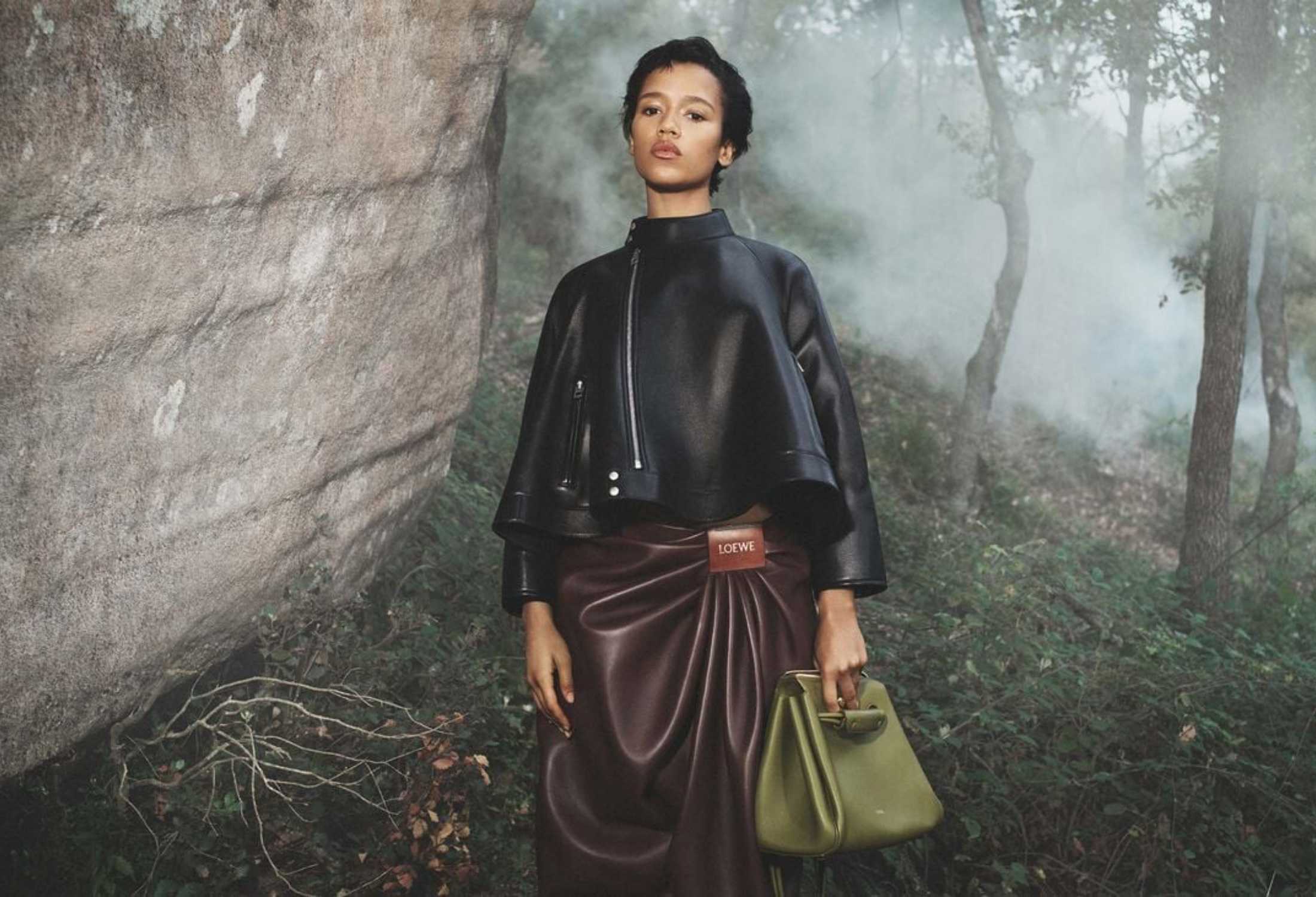ALAÏA AT OTTODISANPIETRO
The arrival of Alaïa at OTTODISANPIETRO goes beyond trends. Our decision stems from deep admiration for the legacy of Azzedine Alaïa and the excitement surrounding the new chapter being written by Pieter Mulier as creative director. His recent show at the Guggenheim Museum in New York — the first ever fashion show held at the iconic institution — reaffirmed Alaïa’s place as a maison that writes its own rules.

In this blog, we revisit the Alaïa of today, starting from the origin. Alaïa represents a way of understanding design as sculpture, sensuality as an internal force, and the body as a free and elevated space. The result is fashion that doesn’t impose, but adapts. It doesn’t dictate, but accompanies. Fashion that is felt, moves, and endures.
Azzedine Alaïa
The visionary Azzedine Alaïa was born in Tunisia in 1935. His passion for sculpture and the female form led him to study at the School of Fine Arts in Tunis, where he developed a unique sensitivity to form and proportion. In the late 1950s, he moved to Paris, where he worked with fashion greats such as Christian Dior and Guy Laroche before opening his own atelier in Le Marais. From there, and almost in secret, he began dressing the international jet set in sensual, feminine garments crafted with surgical precision.
In the 1980s, Alaïa reached the peak of global fashion with his body-hugging silhouettes, revolutionary designs and a work philosophy that remained independent of the industry’s rigid calendar. He never sought fame or flashy campaigns; his vision was far more intimate, perfectionist, and profoundly artistic. Women turned to him because they felt understood.
Nicknamed “The King of Cling,” Alaïa built a legacy on garments that functioned as living sculptures. That legacy has endured long after his passing in 2017 and continues to inspire new voices in fashion.

Pieter Mulier
Discreet, methodical, and deeply sensitive — Pieter Mulier is the Belgian designer who took the reins at Alaïa in 2021. His path into fashion was far from conventional, something common among visionary talents. He studied architecture in Brussels before starting as an intern with Raf Simons, with whom he worked for nearly two decades at Jil Sander, Dior and Calvin Klein. Always behind the scenes, his perspective was instrumental in shaping Simons’ intellectual minimalism. With Alaïa, Mulier stepped into the spotlight, taking on a rare challenge: to reinterpret a globally admired legacy, to evolve it without betraying it.

From the moment he joined the maison, he made it clear he wasn’t there to replace Azzedine. Mulier came to translate his spirit for a new generation. With deep respect, he retained the original team and stayed true to Alaïa’s founding values: beauty, craftsmanship, and freedom. Mulier designs from the body, not the sketch. In his own words, "We don’t design on paper; everything begins on a woman’s body."
Detached from the frantic pace of the fashion system, Mulier works slowly, purposefully, and with meaning. He has returned to Alaïa a clear, emotional and powerful voice — one that understands that true luxury is the rarest asset of all: time.
A New Language
Since his first collection for Alaïa, Pieter Mulier has developed a language of his own, one that dialogues with the archive without copying it. This is not about nostalgia, but alchemy: taking the essential codes — the body, sculpture, silence — and leading them into a modern, reimagined dimension. His approach is a subtle reinterpretation of Alaïa’s spirit. His collections build dresses like soft architecture. Seams trace lines that evoke the passage of time. Garments are only truly understood once worn — an intimate experience between piece and wearer.

Mulier shares Alaïa’s vision that clothing should empower, not constrain. He has reawakened the house’s focus on the body in motion, choosing materials that embrace rather than confine — that let the wearer breathe, live. His work references art, femininity as strength, and a sensuality that is never vulgar.
His interpretation is quiet, intimate, the opposite of spectacle. There’s no logomania or visual imposition. Instead, there’s a desire for permanence, emotion, authenticity — for pieces made to last. Made to become part of the wearer’s life. In doing so, Mulier has restored something essential to Alaïa: the power to speak without raising its voice.
The Guggenheim Show
Alaïa made history with its Winter–Spring 2025 collection, becoming the first fashion house to ever stage a runway show at the Guggenheim Museum in New York. Under Pieter Mulier’s direction, models descended the Frank Lloyd Wright spiral in garments that defied gravity, time, and tradition. It was a show stripped of gimmicks, focused on the body and the freedom of movement. Mulier interpreted the idea of “American beauty” through a purified, sporty, and functional aesthetic — without losing emotional depth.
The pieces appeared to float in space. With no zippers or buttons, fabrics like double-face cashmere, sculpted poplin, and silk taffeta spiraled into clean volumes and geometric silhouettes.

That same essence lives on in the garments available at OTTODISANPIETRO, like the Godet dress, with its pleated silhouette in rose-hued knit; voluminous peplum tops and t-shirts in cotton; and the Molded dress, a piece that pays homage to Alaïa’s signature sculptural form. A standout is the spiral knit skirt, layered to create a silhouette as fluid and architectural as a winding column. Find the collection here.

Accessories play with organic sculpture too. The Le Click East-West bag, with its concave shape and hinge closure, has become a cult object. The Infradito sandals add the perfect closing touch to Mulier’s refined silhouettes.
In the ready-to-wear collection, Alaïa offers a complete sensory experience — from the famous Round jeans with curved legs to the ever-popular Alaïa mesh ballerinas in black and nude. And as the cherry on top, the Le Teckel and Le Coeur bags now sit on our shelves, carrying the brand’s legacy into a new era.



